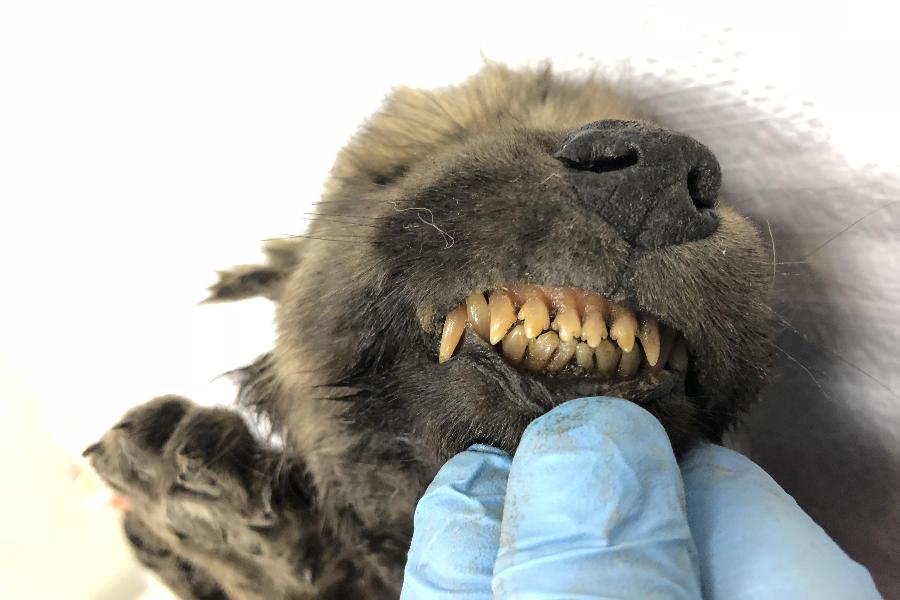
photo: from the archive of participants
- 29 November 2019
- 4633
NEFU: DNA tests on the 18,000-year-old Yakutian canine cannot define the genome
Scientists at the Swedish Center for Paleontology conducted an initial genome sequencing of the 18,000-year-old puppy from Yakutia - DNA tests could not define if the puppy was a wolf or a dog, according to The Siberian Times.
According to Sergey Fedorov, the research engineer at NEFU Institute of Applied Ecology of the North, the DNA results are intriguing. “What if it’s a dog - maybe one of the oldest pet that coexisted next to a human? We can’t wait to get results from further tests. They could help us to figure out the origin of dogs from the Late Pleistocene wolves,” said Sergey Fedorov.
The puppy was discovered in summer 2018 inside a lump of a frozen ground near the Indigirka River, north-east of Yakutsk. Its whiskers, eyelashes, hair and velvety nose are not damaged due to permafrost. The approximate age at the time of death is less than two months: the puppy has milky teeth. The reason for the puppy’s death has not been determined yet, notes The Siberian Times.
Scientists suggest that this can be a puppy of either a wolf, a dog, or the so-called wolfdog. Gray wolves and dogs diverged from an extinct wolf that died about 15,000 to 40,000 years ago. Last summer, research reported in Nature Communications pushed likely dates for domestication further back into the past, suggesting that dogs were domesticated just once at least 20,000 but likely closer to 40,000 years ago.
In Yakutia, the first reliable information about dogs is known from the northernmost point of human settlement in the Eurasian Arctic - Zhokhov Islands from the De Long Island group - about 8,000 years ago. Archaeologists under the leadership of Vladimir Pitulko discovered a snake among the wooden products of the inhabitants of the Zhokhov site. This allowed scientists to develop a hypothesis about the use of dog harness for the mobility and transportation of goods, said Sergey Fedorov.
Based on fragments of the dogs’ skeletons, scientists reconstructed the appearance - Mesolithic dogs were similar to modern sledge dogs in weight and height. The following discoveries are Tumat puppies, found in 2011 and 2015 in the village of Tumat, Ust-Yansky region of Yakutia.


 English
English Russian
Russian Chinese
Chinese